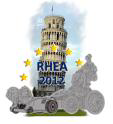Research article to “RHEA International Conference on Robotics”
 University of Southern Denmark and Conpleks Innovation have written a research article for the “First RHEA International Conference on Robotics and associated High-technologies and Equipment for Agriculture” to be held in Pisa Italy September this year. Conpleks Innovation has supplied GPS accuracy test results supporting the conclusions of the article. You can read the article abstract below and feel free to contact us if you want to know more about the article and our RoboTech activities in general. Please contact Tom Simonsen tom.simonsen@conpleks.com. If you want to know more about the conference click here: www.rhea-conference.eu/2012/
University of Southern Denmark and Conpleks Innovation have written a research article for the “First RHEA International Conference on Robotics and associated High-technologies and Equipment for Agriculture” to be held in Pisa Italy September this year. Conpleks Innovation has supplied GPS accuracy test results supporting the conclusions of the article. You can read the article abstract below and feel free to contact us if you want to know more about the article and our RoboTech activities in general. Please contact Tom Simonsen tom.simonsen@conpleks.com. If you want to know more about the conference click here: www.rhea-conference.eu/2012/
Details: Jensen K., Larsen, M., Simonsen, T. and Jørgensen, R.N. Evaluating the performance of a low-cost GPS in precision agriculture applications. First RHEA International Conference on Robotics and associated High-technologies and Equipment for Agriculture. September 19-21, 2012, Pisa, Italy.
Abstract: Field Robots are often equipped with a Real Time Kinematic (RTK) GPS to obtain precise positioning. In many precision agriculture applications, however, the robot operates in semi-structured environments like orchards and row crops, where local sensors such as computer vision and laser range scanners can produce accurate positioning relative to the crops. GPS is then primarily needed for robust inter-row navigation.
This work evaluates a new low-cost GPS. Static tests were used to test the absolute accuracy. To test the GPS in a precision agriculture environment it was installed on a robot driving in a simulated row crop field. The GPS supports raw data output as well and similar experiments were performed to evaluate the GPS when used in a RTK setup.
In field tests more than 95% of the position errors were estimated to be within 2.6 m. In RTK field tests more than 95% of the position errors were estimated to be within 0.2 m. It was concluded that the GPS can be applied to selected applications in row crops and orchards if augmented by local sensors and mapping techniques. Using the GPS in a RTK setup applies to general applications where position errors of 0.2 m are acceptable.
